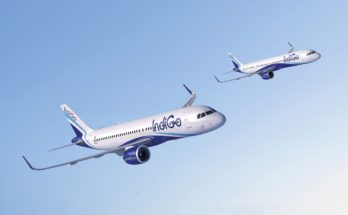The COVID-19 pandemic cast global markets into a period of uncertainty as it moved across the globe in early 2020. The impact of the virus has yet to be fully felt on defense manufacturers, but delivery and order slowdowns are expected in the first half of the year, and will likely linger as containment efforts temporarily slow or halt work.
As Italy is one of the countries hardest hit by COVID-19, Leonardo finds itself at one of the epicenters of the pandemic. The firm’s helicopter production plant is located in one of the areas hardest hit by the disease. The company has responded with action to try and mitigate disruption, but government-imposed lockdowns and worker strikes will have a deleterious effect on the firm for the upcoming year.
Prior to the pandemic crisis, Leonardo had successfully initiated a restructuring effort that bore fruit. Under its Leonardo 2.0 effort, the company aims to achieve double-digit profitability by the early 2020s. This effort tightened project cost control and invested some EUR500 million ($624 million) in core technologies.
For 2019, Leonardo posted sales of EUR13.8 billion, up 12 percent from sales of EUR12.2 billion in 2018. The company reported net income of EUR822 million, compared to EUR510 million for 2018. Backlog rose in 2019 to EUR36.5 billion from EUR36.1 billion in 2018.
The biggest action to date in this strategy was the company’s reorganization of its electronic activities under a new division. The eponymous Electronics Division is the new umbrella for the company’s Land and Naval Defense Electronics, Airborne and Space Systems, and Defense Systems divisions. In addition, the Traffic Control Systems and Automation Systems lines of business also fall under the new division’s aegis. According to the company, the new division will be better able to compete, as its organization now mirrors that of its competitors and has the necessary critical mass to be viable.
Leading the company’s aerospace operations is Leonardo Helicopters, which slowed in 2019 following a record 2018. The jump in 2018 was due to a EUR3 billion order for 28 NH Industries NH90 helicopters from Qatar.
The helicopter unit scored a major upset when its MH-139 Grey Wolf was selected as the winner of the U.S. Air Force’s UH-1N Huey replacement program. The helicopter is based on the AW139 and is offered by Boeing as prime contractor. Leonardo assembles the helicopters at its northeast Philadelphia plant, with Boeing integrating military-specific components at its Ridley Park facility south of the city. With success begetting success, in early 2020 the company was selected by the U.S. Navy to provide 32 TH-73A training helicopters. These victories give Leonardo a solid win in the U.S. market after years of disappointment.

As it seeks to build its presence in the rotorcraft market, Leonardo expanded its portfolio with the $185 million takeover of Kopter. The company said that this move allows Leonardo to further strengthen its position in the rotorcraft sector. Kopter’s SH09, a new single-engine helicopter, allows Leonardo to quickly and easily expand its product base in a sector in which it previously had minimal exposure. The Swiss company’s competencies will boost future developments toward more disruptive technologies, mission capabilities, and performances, including hybrid/electrical propulsion solutions. This acquisition replaces a planned investment aimed at the development of a new single-engine helicopter. With this further enlarged product range, Leonardo is aiming to gain more market share in the civil sector.
In fixed-wing aircraft markets, new realities are being felt. The company’s trainers have enjoyed success for many years, but that run is slowing. Leonardo is working on existing orders for Poland and Italy. Production of Leonardo’s M-346 jet trainer is likely to remain at a low rate in the near term as the company hunts for new orders. The company reports some recent success in expanding the backlog for the M-346 with an order for six fighter variants and a possible trainer for Azerbaijan. One bright spot for the Venegono facility is the ongoing production of the M-345 trainer. The Italian Air Force has ordered 23 aircraft so far, five in an initial deal announced in January 2017 and 18 more ordered in June 2019. The Italian Air Force is expected to order 27 more aircraft in the future to replace an existing fleet of 1980s-vintage MB-339 basic trainers. Deliveries are forecast to begin in 2020. The company’s long-shot hopes of winning the U.S. Air Force’s T-X trainer competition were dashed in September 2018 when the Boeing/Saab team was selected for the program.
That said, aerostructures production continues to be a key component of the firm’s aeronautic operations. Here the firm produces large structural components for a variety of commercial and military programs such as the 787, 767, A321, ATR, A220, and A380 aircraft and for military platforms such as the F-35, Eurofighter, and C-27J. Looking ahead, the company is working on two new European new generation projects: Tempest with the United Kingdom, Sweden, and Italy and the MALE2025/EuroMale UAV program in partnership with Airbus and Dassault.
At the company’s semi-autonomous U.S. subsidiary, Leonardo DRS, the future appears secure after years of speculation that it might be divested. DRS was acquired for $5.2 billion in 2008, shortly before the financial crisis. The value of the deal has since plummeted, with DRS’s sales reported at $2.6 billion for 2019 (lower than Leonardo may like but much improved over past year results of $1.8 billion) in Leonardo’s annual report. As a result, DRS underwent significant cost-cutting through both divestitures and layoffs, reducing its employee count from a high of 10,000 to about 5,500 currently. This restructuring appears to be paying off, as DRS sales have begun trending upward and increased growth in the U.S. has led to several facility expansions.
The actions undertaken so far make it clear that the strategy of Leonardo’s management is correct. While the near term will be impacted by COVID-19, whose effects could linger for several years, longer term the company’s foundation should see it through.
A military history enthusiast, Richard began at Forecast International as editor of the World Weapons Weekly newsletter. As the Internet grew in importance as a research tool, he helped design the company's Forecast Intelligence Center and currently coordinates the EMarket Alert newsletters for clients. Richard also manages social media efforts, including two new blogs: Defense & Security Monitor, covering defense systems and international issues, and Flight Plan, which focuses on commercial aviation and space systems. For over 30 years, Richard has authored the Defense & Aerospace Companies, Volume I (North America) and Volume II (International) services. The two books provide detailed data on major aerospace and defense contractors. He also edits the International Contractors service, a database that tracks all the contractors involved in the programs covered in the FI library. More recently he was appointed Manager, Information Services Group (ISG), a new unit that encompasses developing outbound content for both Forecast International and Military Periscope.



